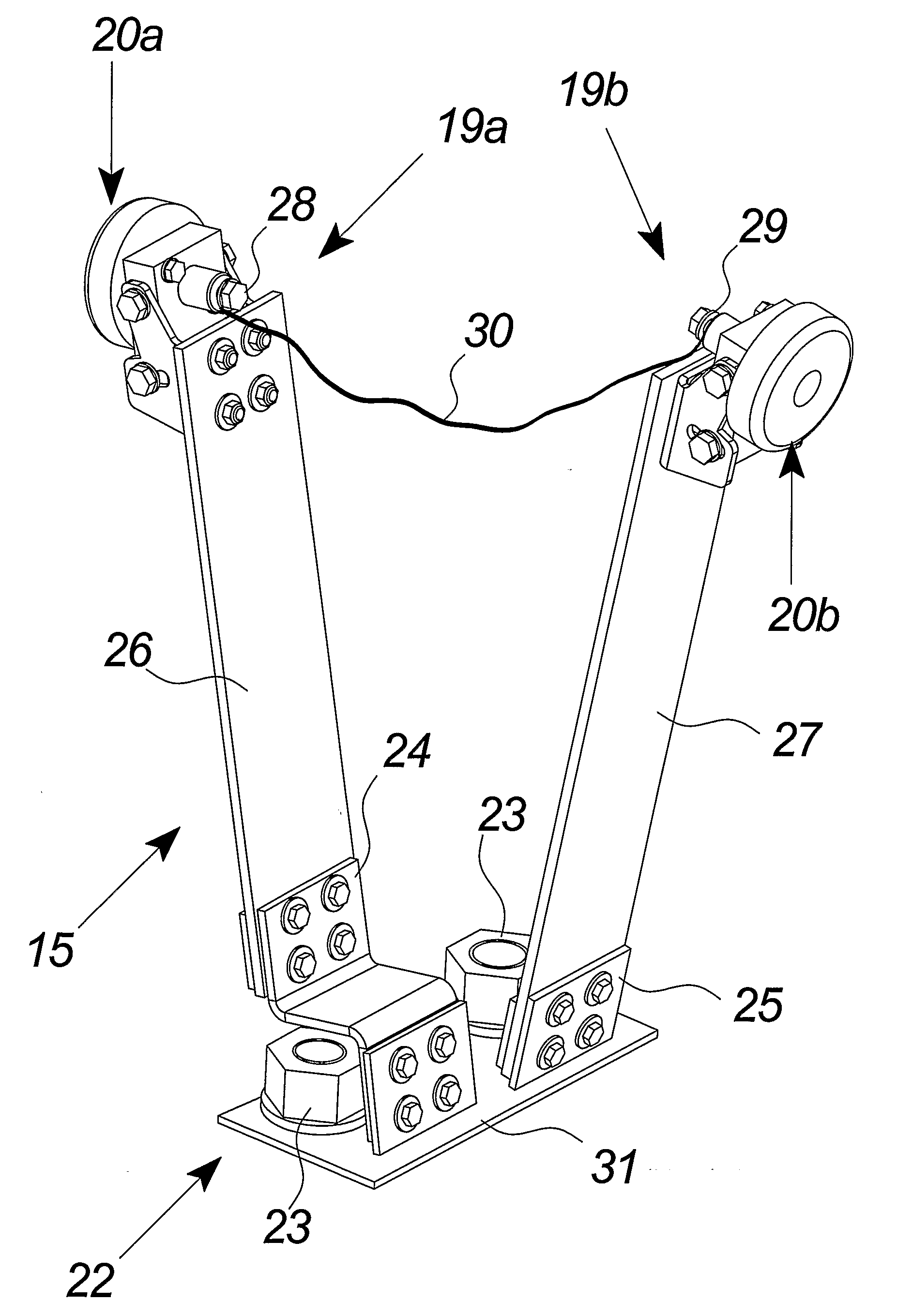Wind Turbine Lightning Connection Means Method and Use Hereof
a lightning connection and wind turbine technology, applied in the installation of lighting conductors, wind energy generation, motors, etc., can solve the problems of large parts of lightning current finding alternative and often undesired and destructive routes to the ground potential, and reducing the lifespan of components. , to achieve the effect of high flexibility, high durability and high flexibility
- Summary
- Abstract
- Description
- Claims
- Application Information
AI Technical Summary
Benefits of technology
Problems solved by technology
Method used
Image
Examples
Embodiment Construction
[0071]FIG. 1 illustrates a modern wind turbine 1 with a tower 2 and a wind turbine nacelle 3 positioned on top of the tower. The wind turbine rotor 5, comprising three wind turbine blades, is connected to the nacelle through the main shaft which extends out of the nacelle front.
[0072]As illustrated in the figure, wind beyond a certain level will activate the rotor due to the lift induced on the blades and allow it to rotate in a perpendicular direction to the wind. The rotation movement is converted to electric power, which is supplied to the utility grid.
[0073]FIGS. 2a and 2b illustrate a normal wind turbine blade with a well-known lightning protection system. FIG. 2a illustrates a front view of the wind turbine blade seen and FIG. 2b a side view of the blade.
[0074]FIG. 2a illustrates how the tip 6 of the wind turbine blade 5 with a metal receptor 8 intercepts the lightning stroke 7. The receptor is connected to the lightning down conductor 9 inside the wind turbine blade 5. The co...
PUM
 Login to View More
Login to View More Abstract
Description
Claims
Application Information
 Login to View More
Login to View More - R&D
- Intellectual Property
- Life Sciences
- Materials
- Tech Scout
- Unparalleled Data Quality
- Higher Quality Content
- 60% Fewer Hallucinations
Browse by: Latest US Patents, China's latest patents, Technical Efficacy Thesaurus, Application Domain, Technology Topic, Popular Technical Reports.
© 2025 PatSnap. All rights reserved.Legal|Privacy policy|Modern Slavery Act Transparency Statement|Sitemap|About US| Contact US: help@patsnap.com



